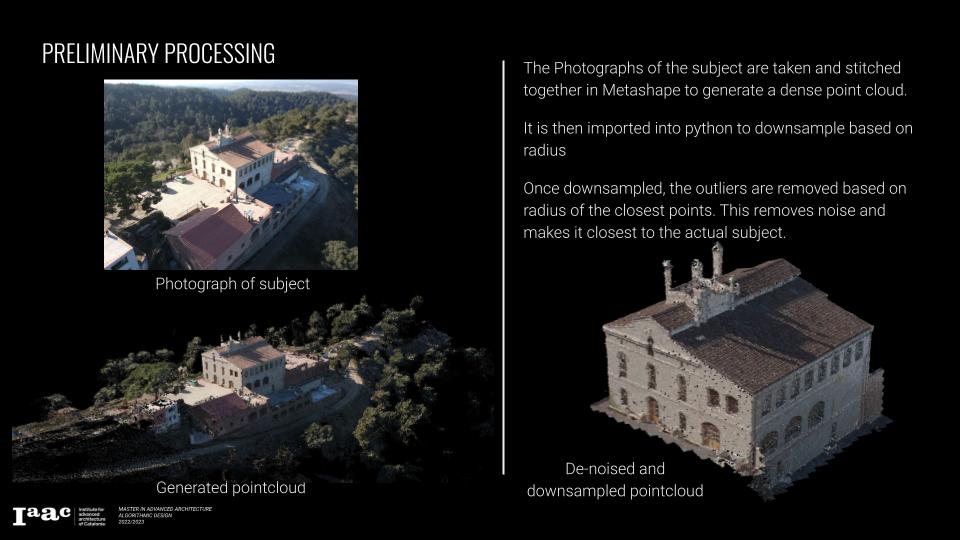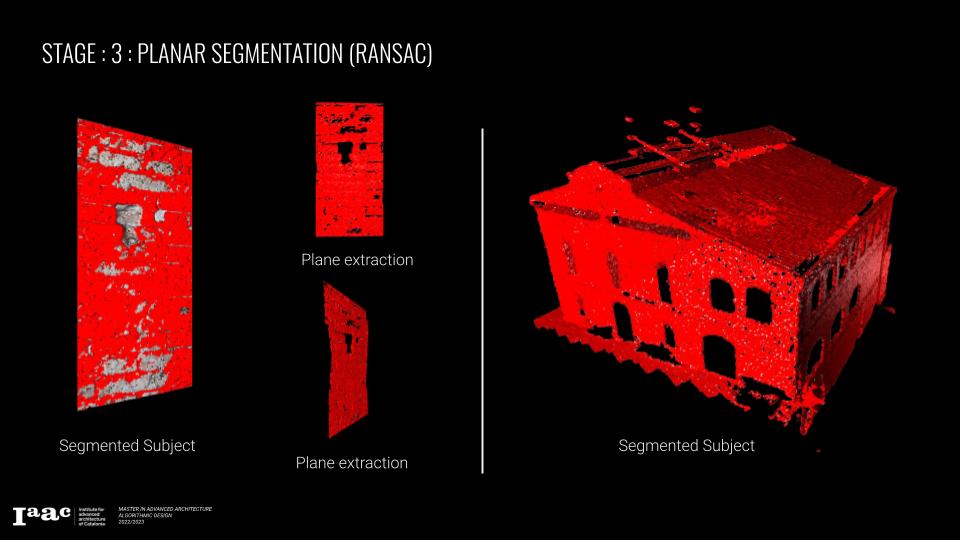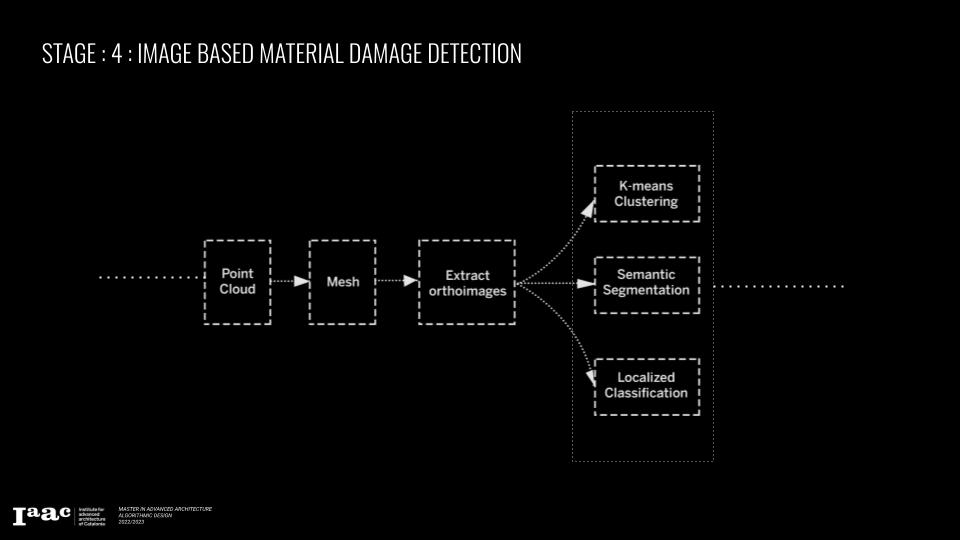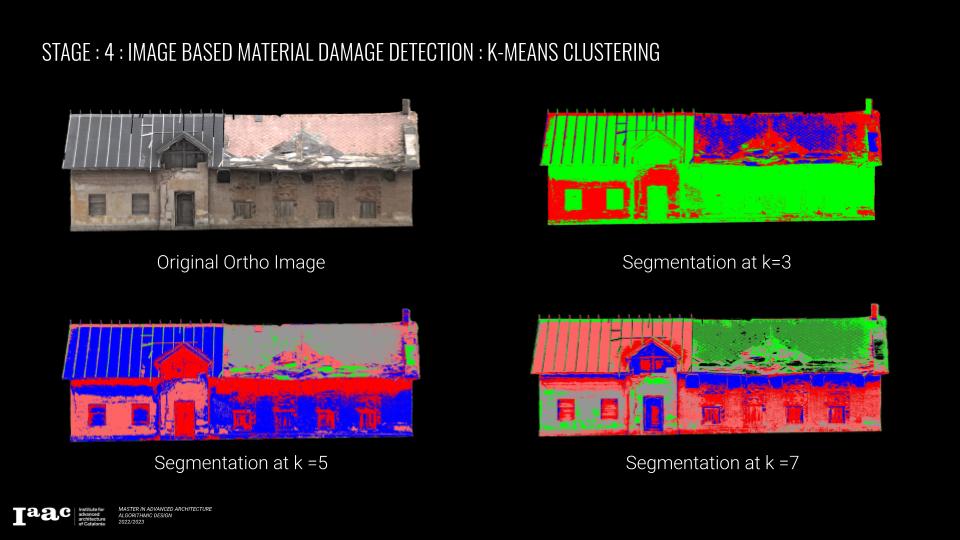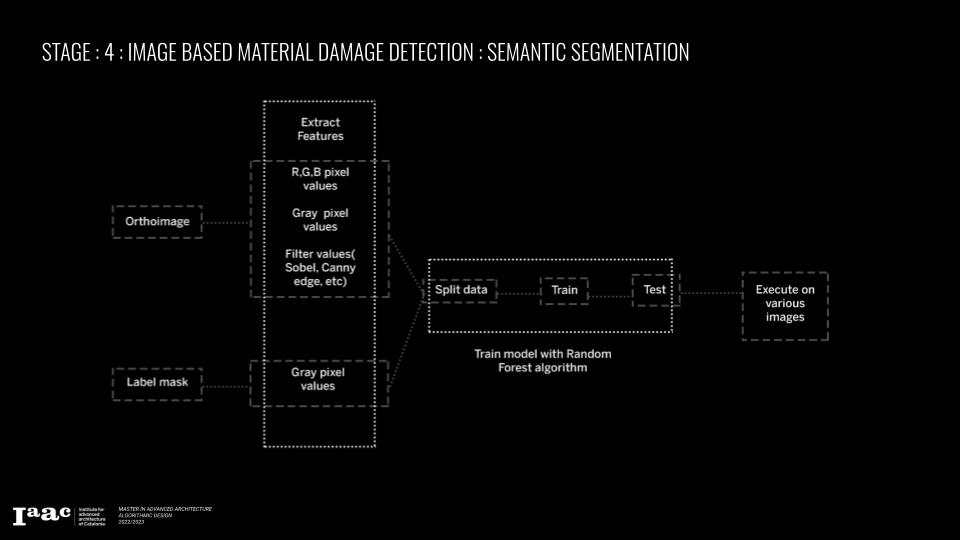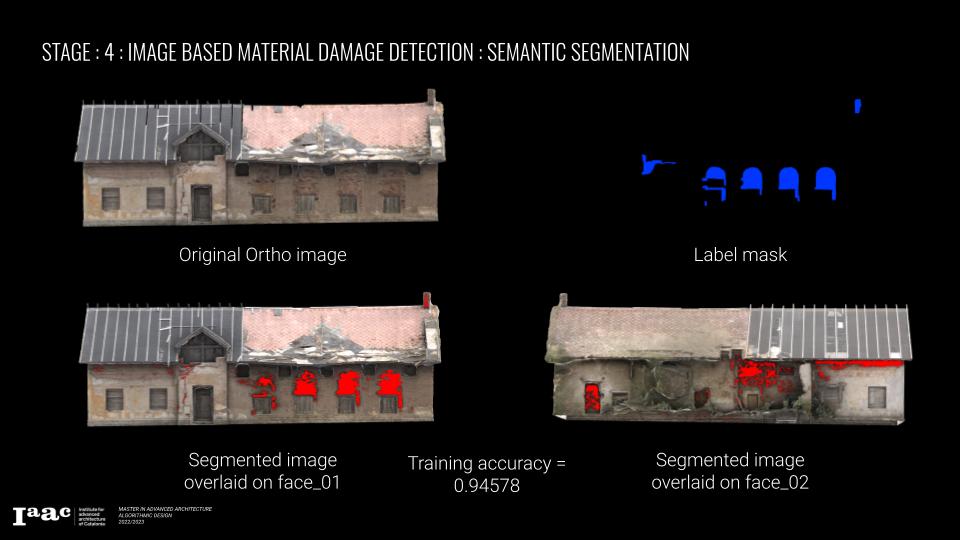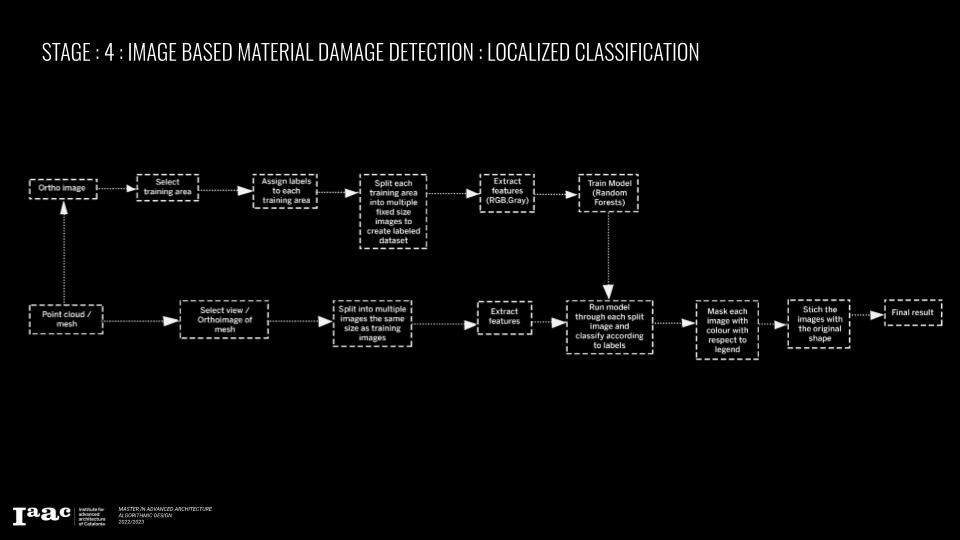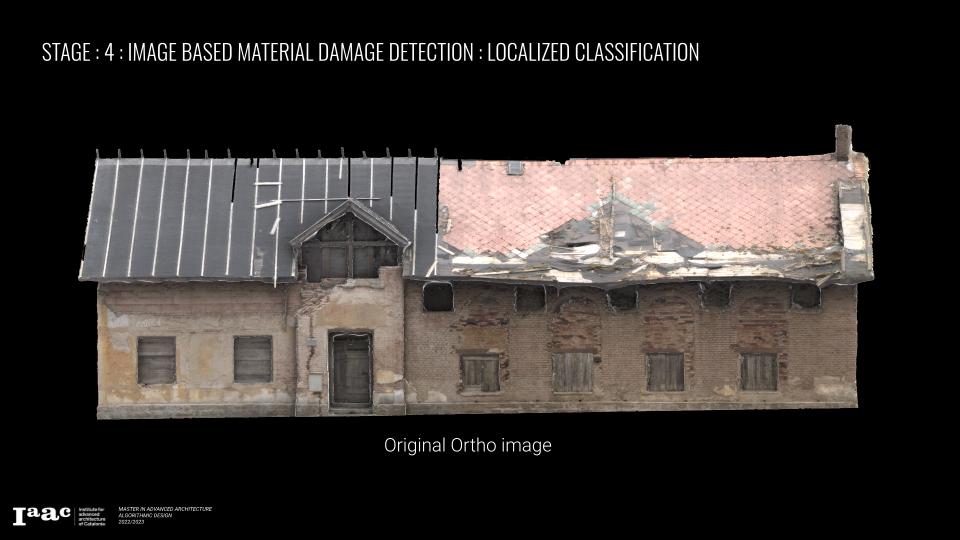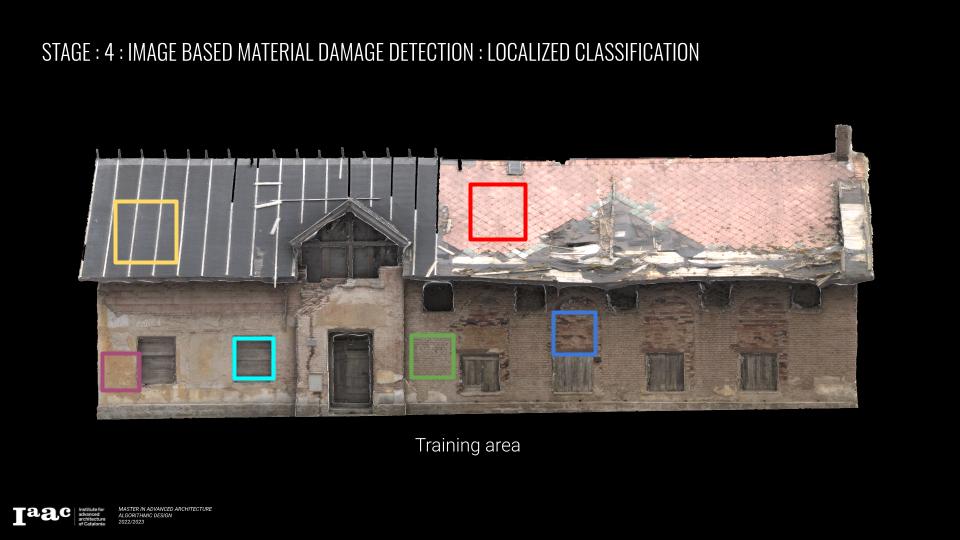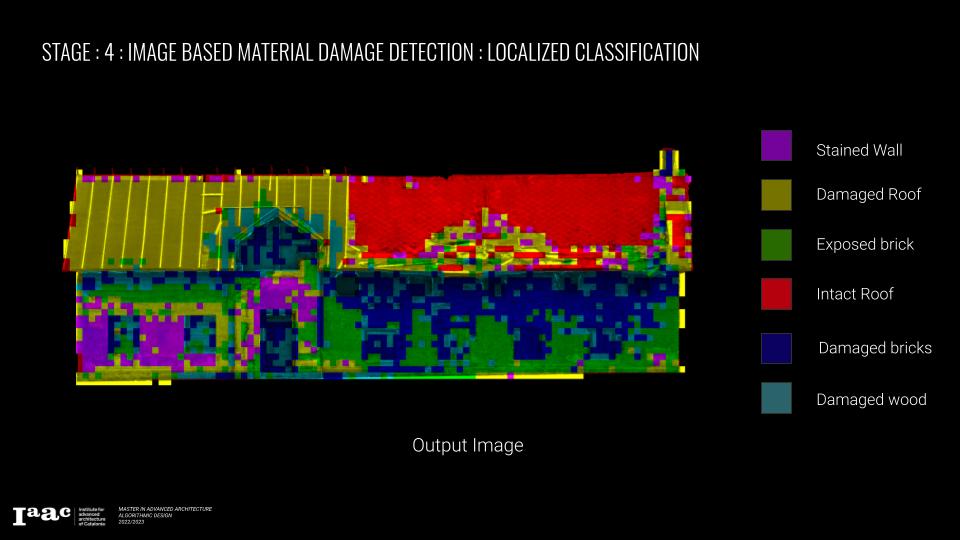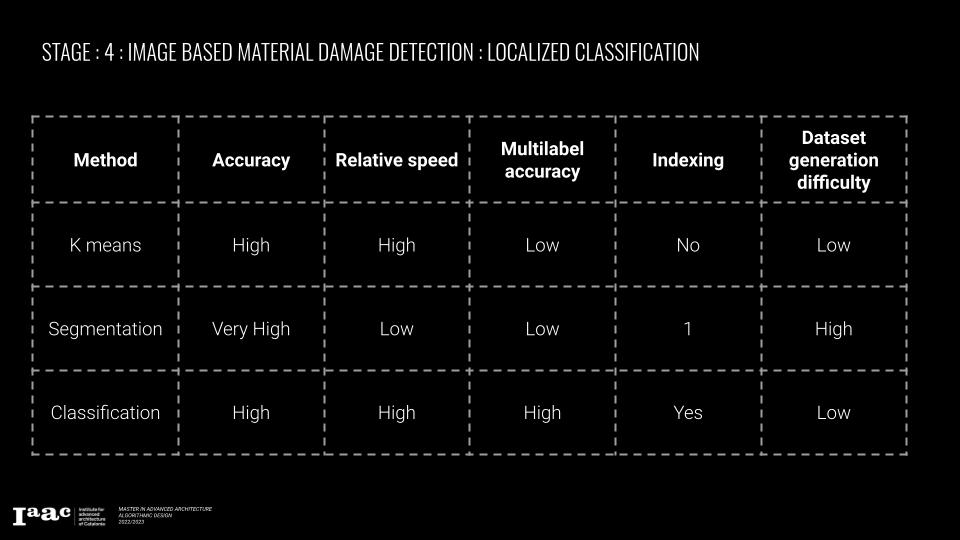The aim of this project is to create a workflow which would help in in the preliminary analysis of physical and materialistic damage using computer vision to enhance sight and successfully pinpoint the defects that can be seen by the camera.

The Construction industry follows a very linear approach in terms of usage of materials or fully built structures. The concept of reuse is very minimal as it tends to not be economically feasible.
Renovation of existing buildings after a certain degree of damage is tedious and demolition is usually preferred over complex retrofitting.
Any sort of Renovation if carried out is through traditional methods which involves manual testing, estimation and calculation.

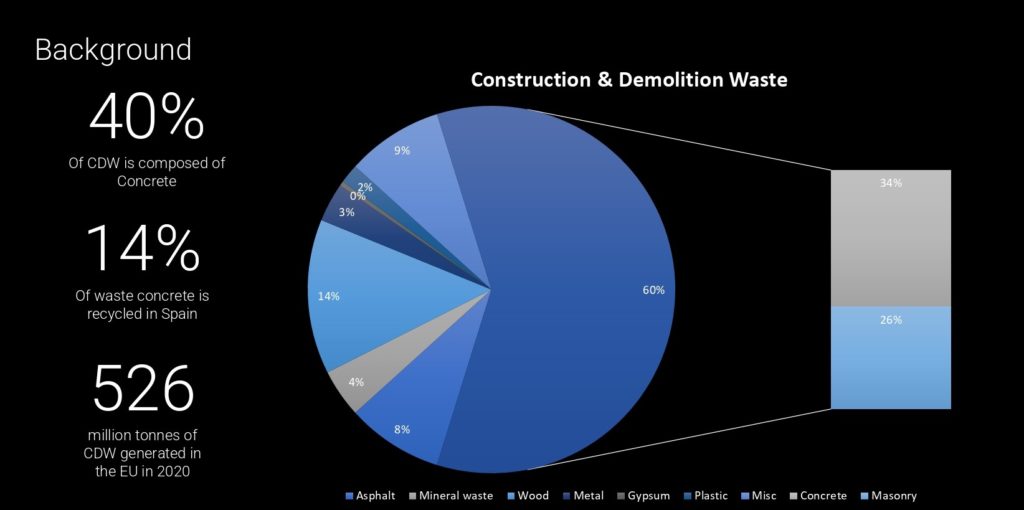
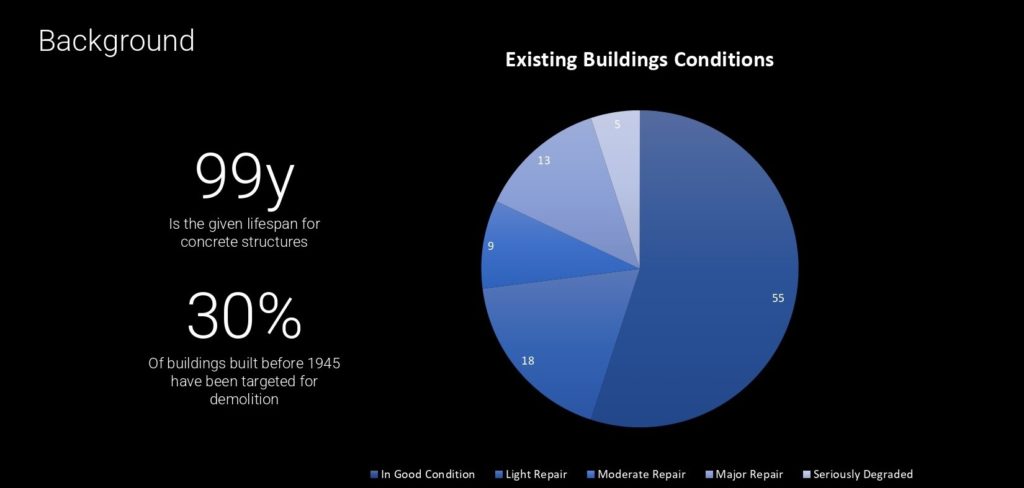
Thesis Statement
The aim of this project is to create a workflow which would help in in the preliminary analysis of physical and materialistic damage using computer vision to enhance sight and successfully pinpoint the defects that can be seen by the camera.
State of the Art
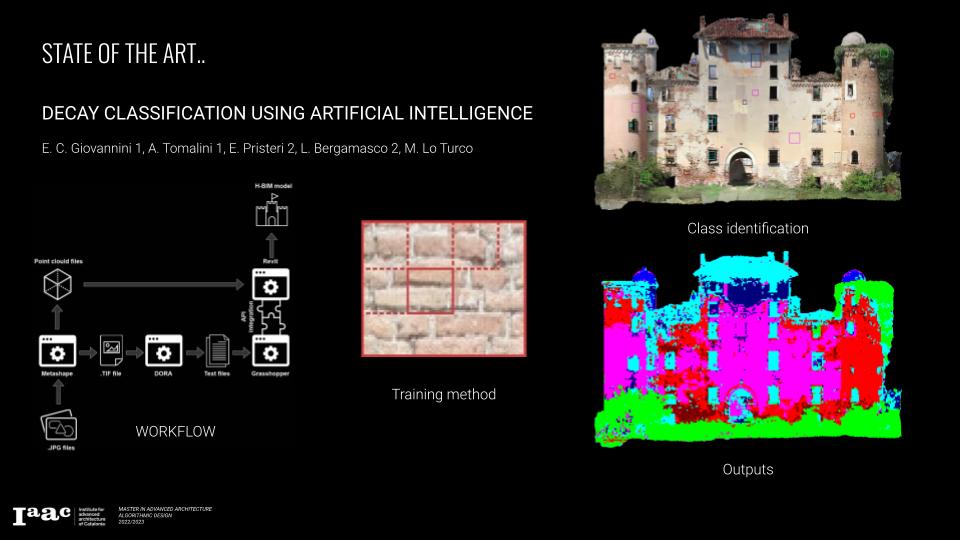
The project is successful in classifying materials and although the time and computation power required to use this workflow is high and does not yield in satisfying workable 3D results.

Building Projects Using As-Built BIM Models
Sofía Mulero-Palencia , Sonia Álvarez-Díaz and Manuel Andrés-Chicote
This model is highly depend on classification and decision tree process. It is not universal and is highly dependent on the training data.
The model is extremely efficient in terms of adaptability and universal application.
Workflow
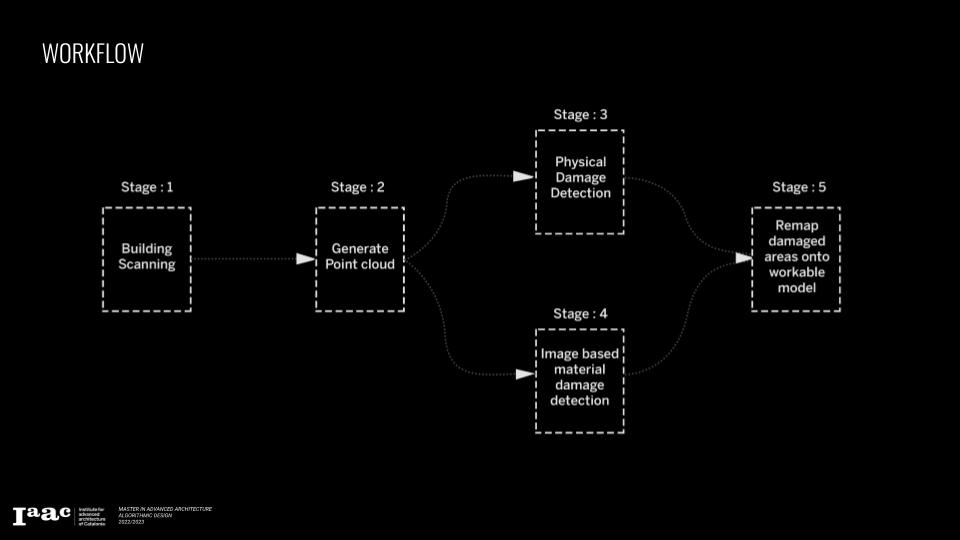
STAGE : 1 : BUILDING SCANNING
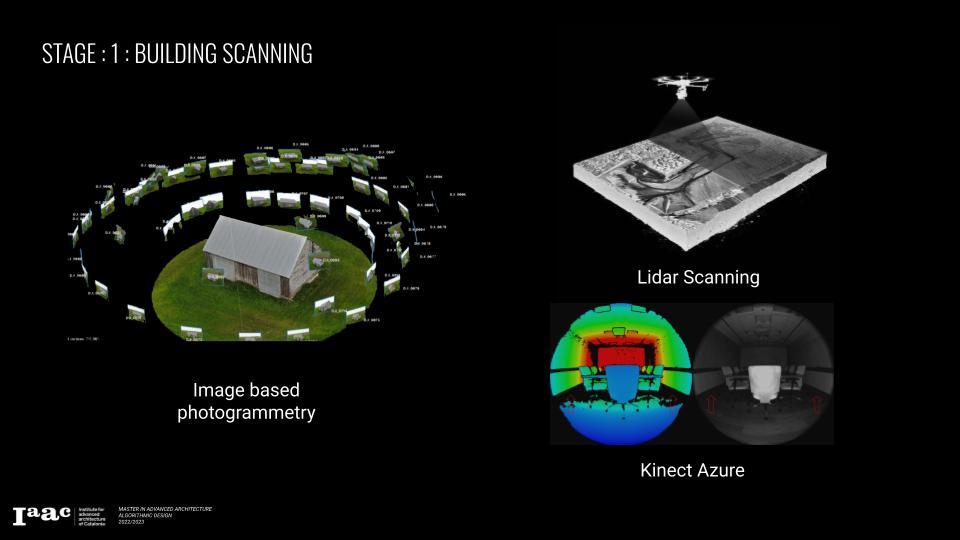
Scanning Options:
-LIDAR : Accurate at depth mapping and 3D point clouds. Used infrared over texture mapping
-Photogrammetry : Quality depends highly on the quality and contrast of images. Depth and mass provided through texture mapping
STAGE : 2 : PRELIMINARY PROCESSING
